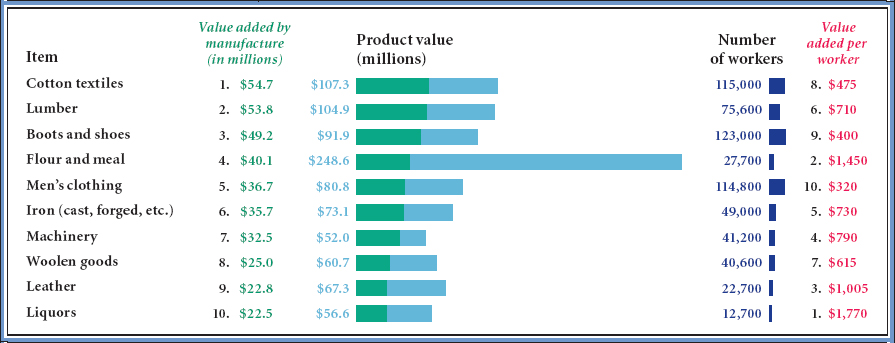The American Industrial Revolution
The Industrial Revolution came to the United States between 1790 and 1860, as merchants and manufacturers reorganized work routines, built factories, and exploited a wide range of natural resources. As output increased, goods that once had been luxury items became part of everyday life (Figure 9.1). The rapid construction of turnpikes, canals, and railroads by state governments and private entrepreneurs, working together in the Commonwealth System, distributed manufactures throughout the nation.

FIGURE 9.1 Leading Branches of Manufacture, 1860
This chart shows clearly that in 1860, three industries — boots and shoes, cotton textiles, and men’s clothing — each employed more than 100,000 workers. However, the workers in three other industries had the highest productivity, with each worker adding more than $1,000 in value to the finished goods. What were these industries? Why were their workers more productive? Adapted from Douglass C. North, Growth and Welfare in the American Past, Second Edition. Copyright © 1974. Reprinted with permission of the author.